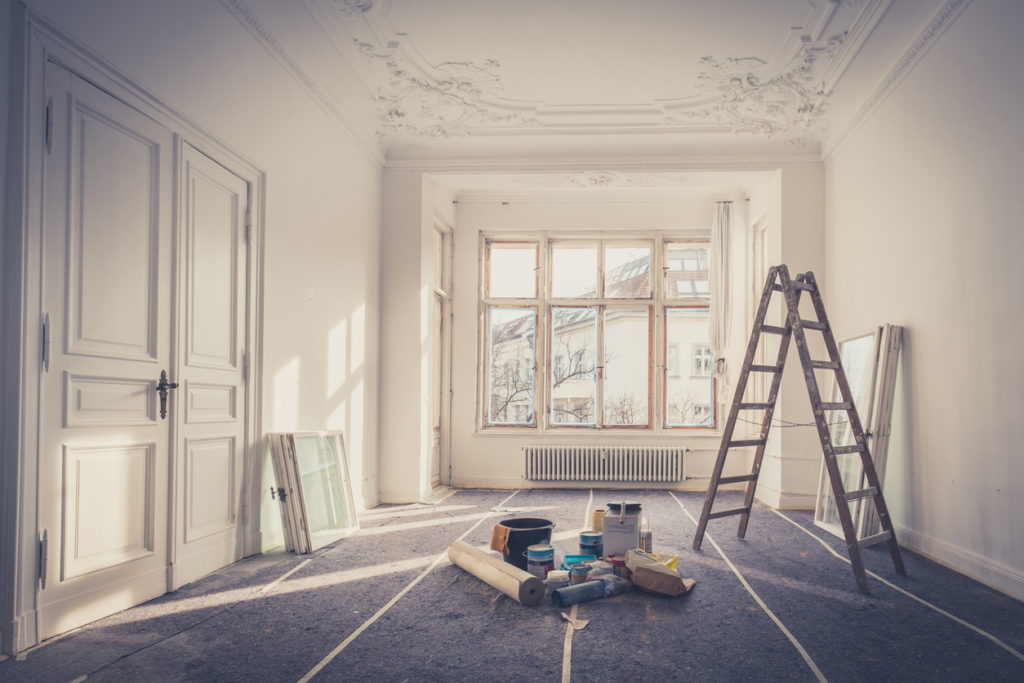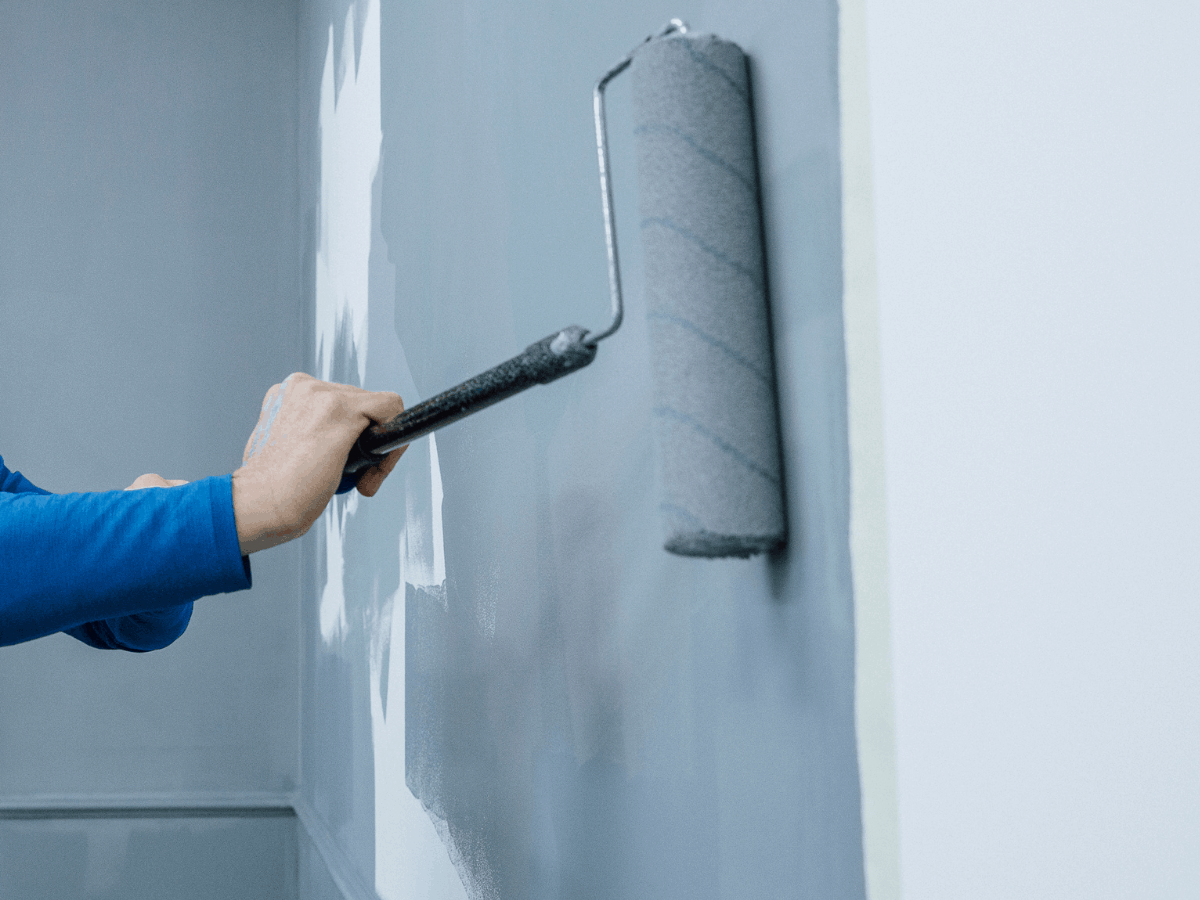Enhance Your Inside Layout With Comprehensive Shade Consultation
The integration of color assessment into indoor layout offers an one-of-a-kind opportunity to improve and boost the visual and psychological vibration of a room. By involving with a seasoned color specialist, you can navigate the complexities of shade choice, making certain that your choices not just complement building features but likewise reverberate with personal design and psychological influence.
Benefits of Shade Consultation

Moreover, shade assessment help in taking full advantage of natural light and optimizing spatial understanding. Lighter colors can make a room appear more large, while darker tones develop an intimate setting. Cleveland Metro Painting Specialists. This calculated application of color can dramatically influence the total ambiance of any type of indoor space
Furthermore, expert experts possess a detailed understanding of ageless classics and existing fads, making certain that the chosen shades will certainly remain appealing gradually. This insight can save customers from pricey redesigns in the future. Finally, color consultation encourages clients by offering them with a clear vision and direction, fostering confidence in their design selections and inevitably causing a much more satisfying and effective interior decoration result.
Recognizing Shade Psychology
The relevance of shade psychology in interior decoration can not be overstated, as it digs right into the emotional and psychological results that various tones can evoke in people. Shades can influence state of mind, actions, and even efficiency, making them a vital consideration in any layout job.
For circumstances, cozy colors such as red, orange, and yellow are frequently connected with energy and heat. They can boost feelings of enjoyment and comfort, making them suitable for social areas like living kitchen areas or rooms. Conversely, trendy shades like blue, eco-friendly, and purple often tend to stimulate calmness and peace, making them suitable for bed rooms or reflection locations.
Furthermore, using neutral tones can develop a balanced setting by enabling the bolder shades to stand out without frustrating the senses. Understanding these mental influences allows designers to create areas that not just look cosmetically pleasing but likewise promote psychological health.
Incorporating shade psychology into interior decoration entails a thoughtful choice of hues customized to the intended function of each space, ultimately enhancing the general experience for its passengers. This recognition is important for attaining a useful and harmonious interior atmosphere.
The Color Wheel Clarified
It comprises primary colors-- red, blue, and yellow-- that can not be produced by blending various other colors. Tertiary colors result from mixing a primary and a secondary color, link leading to hues such as green and red-orange.
The color wheel assists designers understand the connections between shades, consisting of corresponding, comparable, and triadic schemes. Corresponding colors, positioned opposite each various other on the wheel, develop lively contrasts that can invigorate a room.
Using the shade wheel in interior layout not only boosts visual charm yet likewise stimulates details feelings and environments, making it a crucial reference for shade examination. Understanding these connections inevitably equips designers to develop rooms that are both functional and visually captivating.
Choosing the Right Scheme
A well-chosen shade system can unify a space, enhance its features, and evoke desired emotions. Different rooms serve different functions and require combinations that reflect their desired usage; for instance, relaxing colors such as soft blues or eco-friendlies function well in rooms, advertising leisure.
Following, consider the all-natural light offered. Light can substantially modify how colors show up, so it is necessary to assess the area at various times of the day. In addition, consider existing architectural components and furnishings. A harmonious palette must enhance these functions, producing a cohesive look throughout the room.
When picking colors, utilize the 60-30-10 rule, which recommends that 60% of the room should be a dominant shade, 30% an additional shade, and 10% an accent shade. This proportion makes sure balance and aesthetic rate of interest (Cleveland Metro Painting Specialists). Finally, example shades on the walls prior to committing, as this enables you to see just how the hues connect with one another and the total setting they develop in your interior decoration project.
Dealing With a Color Specialist

When collaborating with a color specialist, the process normally starts with a preliminary examination. During this meeting, you'll review your vision, choices, and the existing aspects in your space. The expert will certainly evaluate your requirements and may suggest details color combinations that align with your objectives.
After establishing an instructions, the expert will give samples and original site visual help to assist you visualize the suggested color pattern. This action is important, as shades can show up in a different way under differing illumination conditions.
Furthermore, a color professional can assist you in choosing corresponding home furnishings, art work, and devices to balance with your picked scheme. By working together very closely, you can achieve a refined aesthetic that boosts your interiors and develops a welcoming environment. Inevitably, the experience of a shade specialist can dramatically enhance the overall effect of your layout job.
Verdict
In summary, thorough shade assessment serves as an essential tool for enhancing indoor layout. By leveraging specialist expertise of shade psychology and spatial dynamics, a customized shade combination can be created to evoke specific feelings and develop a harmonious setting.
By involving with an experienced color expert, you can browse the complexities of color selection, ensuring that your options not only complement building attributes but additionally reverberate with individual design and psychological influence. It consists of key colors-- red, blue, and yellow-- that can not be produced by blending other colors.The color wheel helps developers comprehend the connections in between colors, consisting of corresponding, similar, and triadic schemes.When picking shades, make use of the 60-30-10 policy, which recommends that 60% of the space need to be a dominant shade, 30% a second shade, and 10% an accent shade. By leveraging expert expertise of color psychology and spatial characteristics, a customized color combination can be developed to evoke specific emotions and produce an unified setting.